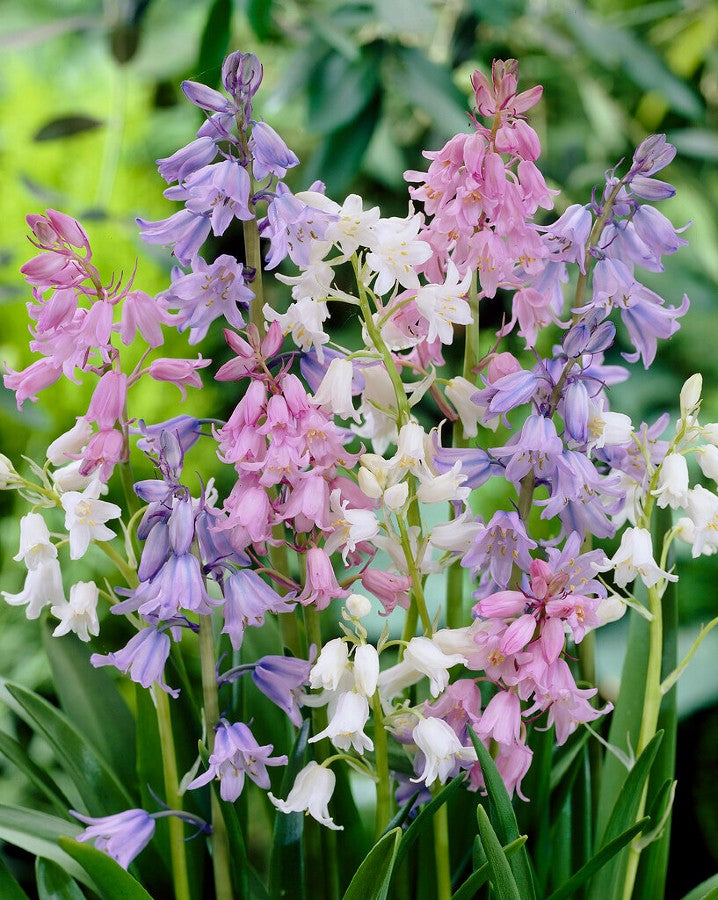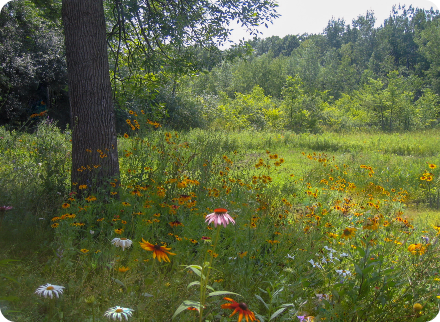- Out of Stock
- Advance Sale
1
/
of
1
Wood Hyacinth 'Mix'
Wood Hyacinth 'Mix'
 Sorry!
This Item is not Available
Sorry!
This Item is not Available
Price:
$13.50
Price:
$27.00
Sale price
$13.50
Unit price
/
per
Couldn't load pickup availability
Ships in September 2025
View full details

ADVANCE SALE -SHIPS IN SEPTEMBER 2025
Wood Hyacinth Mix Hyacinthoides hispanica
Ships as: Package of 10 Bulbs
CHARACTERISTICS
Height: 10-12 Inches
Color: Blues, Pinks, Whites
Hardiness Zone: 3-9
Bloom Time: Late Spring
Common Questions
What are fall planting bulbs?
Fall planting bulbs are plant species that need to be planted in the ground in the Fall before the first hard frost. Bulbs such as tulips,daffodils,narcissus,hyacinths,iris,allium,etc. require a cold period in order to form roots and based on lighting and warmth conditions will bloom in the spring. After flowering,the bulbs store food in their underground organs so they can grow again the following year. Therefore,bulbs are only available during the fall,after they are harvested in Holland over the summer,inspected and then packed for shipment to the United States. If bulbs are not planted within a year after harvesting,the bulb will have been dormant for too long and its chances of being able to form roots again will be minimal.
What should I look for when buying fall planting bulbs?
Look for bulbs that are firm,if they appear soft that is a sign of a rotting bulb which may occur when bulbs are not kept in a cool dry place. Also,look for bulbs that are not bruised. Tulips for example still have a layer of skin around them like an onion,this helps protect them from bruising,if the skin is removed it is ok. As a consumer it is important to understand bulb sizing. While bigger is not necessarily better,it is important to understand what is and what is not a consumer value. For example,top size tulip bulbs have a circumference of 12 centimeters or more. If you are trying to showcase a set of 10 tulips in your yard,look for top size bulbs. On the other hand,if you would like to plant a large bed of tulips for cut flowers or just to display a carpet of spring color,smaller tulips with a minimum circumference of 10 centimeters are perfectly acceptable. All of our fall bulbs are top size at the Vermont Wildflower Farm and we do our best to bring you the most accurate information about each species possible,but local soil conditions,time of planting and regional weather patterns will affect final results in an individual's garden. Use the information on each species tag when you receive your bulbs as a good guideline as to what you need for optimal success.When should I plant my bulbs?
Fall bulbs must be planted in the fall before the first hard frost. It is best to wait until the outside temperature does not get above 65 degrees anymore. If there is a hard frost in a the first couple weeks after planting,mulch your beds and remove in the spring. Light morning frosts will not hurt the bulbs.Oops! I forgot to plant my bulbs this fall. What should I do?
Fall Bulbs really need to be planted within 6 months of purchase. Bulbs are a dormant but still very much a living product that need the right balance of water and soil. Leaving bulbs out of the ground for too long will cause them to loose their hydration and die. Optimally bulbs should be planted 6 weeks before the first hard frost. If your ground is frozen in December for example,try to wait for a thaw or break in the weather and plant them a little deeper than normal. If this seems an unlikely scenario,plant your bulbs in pots,place them in a cool (not freezing) dark place and water sparingly throughout the winter. When the ground thaws in the spring you can place the pots in the ground or on your patio. As a last resort you can plant the bulbs in the spring when the ground thaws but do not expect many flowers that spring. Feed with bulb care fertilizer and you should have better results next spring.Why can't I plant fall bulbs in the spring?
Bulbs require a minimum cold period of 6 weeks to form roots. If you plant bulbs in the spring they will not have sufficient cold weeks to grow their roots. It also means that the bulbs have been dormant for over 9 months. This long period of dormancy will also affect bulb performance.Its not even spring,and my bulbs are coming up,what should I do?
There is nothing you can do,if the weather is unusually warm some bulbs will be confused and start to sprout. The good news is that this means that your bulbs have a good root foundation and no snow to shovel! Most bulbs are resilient and will bloom again in the spring.What can I do to prevent deer,rodents,rabbits and other animals from eating my bulbs and flowers?
The best remedy for preventing animals from eating your bulbs is to plant bulbs they do not like to eat. While you can spray them with soap,pepper or a chemical,this tends to wash off after the first rainfall and can be time consuming. Here is a list of bulbs that deer,rabbits and other rodents do not like to eat: •Daffodils •Narcissus •Hyacinths •Allium (all types) •Fritillaria •Fall Flowering Crocus •Iris (all types) •Anemones (all types) •Scilla (all types) •Snowdrops •Eranthus •Chinadoxa •Muscari Grape HyacinthsWhat type of fertilizer should I use?
Fertilizer is not necessary but for increased performance a small application of Bulb Booster or bone meal is acceptable. It is more important to make sure the pH level of your soil is correct.What is the right pH level of soil for bulbs?
Having the right pH level in your soil is important to bring out the true flower color. The ideal pH level for bulbs is between 6 and 7. To check your pH level,bring a soil sample to your local garden center or purchase an inexpensive testing kit. Click here to purchase in our garden products section.What do I do after my bulbs have bloomed in the spring?
Let the leaves die down naturally,do not cut them off or mow over them. After bulbs have bloomed it is important to let them rest because during this period,the bulb is gathering nutrients from the soil and growing so that it can bloom again next year.My Bearded Iris's arrived and why do they look like that?
Bearded Iris's are rhizomes and come fresh from the fields they were dug from for late summer planting. The top growth has been cut and may look dry but rest assured they are healthy. Iris should be planted so the tops of the rhizomes are exposed and the roots are spread out facing down in the soil. Insure that you don't plant them too deep. Just follow planting instructions/tips that come with each rhizome and you will have big,beautiful Bearded Iris blooms next spring!
CUSTOM MIXES
We offer CUSTOM Seed Mixes for All Your Projects!
Best Pricing & Advice for Commercial projects
We've got you COVERED for Landscape
Management, Conservation & More!





